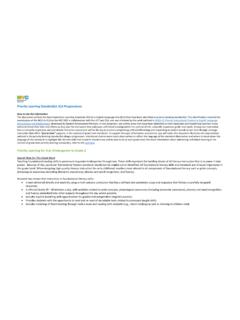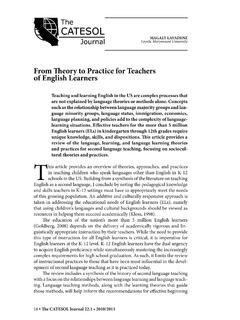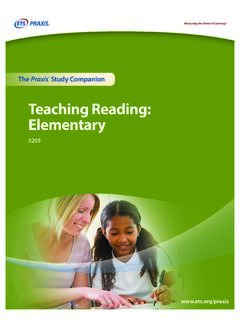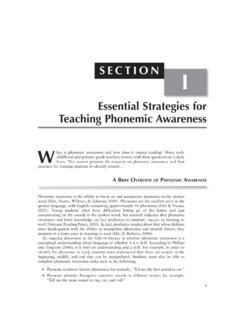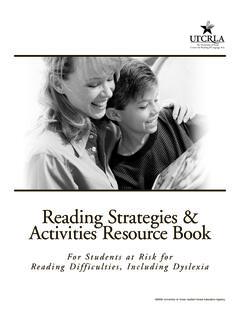Transcription of The Impact of Native Language Use on Second Language ...
1 English Language Teaching; Vol. 9, No. 5; 2016 ISSN 1916-4742 E-ISSN 1916-4750 Published by Canadian Center of Science and Education 134 The Impact of Native Language Use on Second Language Vocabulary Learning by Saudi EFL Students Muhammad Saleem Khan1 1 Coordinator English Language Programme, Buraydah Community College, Qassim University, Saudi Arabia Correspondence: Muhammad Saleem Khan, Coordinator English Language Programme, Buraydah Community College, Qassim University, Saudi Arabia. E-mail: Received: February 28, 2016 Accepted: April 8, 2016 Online Published: April 10, 2016 doi: URL: Abstract This paper strives to explore the Impact of Native Language use on Foreign Language vocabulary learning on the basis of empirical and available data. The study is carried out with special reference to the English Language Programme students in Buraydah Community College, Qassim University, Saudi Arabia.
2 The Native Language of these students is Arabic and their Second Language is English. The participants in this research study are the post-secondary students of Buraydah Community College in Intensive Course Programme. The instrument used in this study was in the form of two tests. It is well known that in Language assessment tests play a pivotal role in evaluating the EFL learners Language proficiency. The use of Native Language as a semantic tool for assessing Second Language learners understanding shouldn t be rejected altogether especially for the undergrad Saudi EFL (English as a Foreign Language ) students. The outcomes of the study show that in learning the vocabulary of target Language is significantly helped by the use of translation method of Native Language (Arabic) in understanding the meaning of novel words and expressions of foreign Language (English). This method is widely welcomed by majority of the students of Buraydah Community College.
3 It s recommended to use this method in order to take the students directly to the core meaning of the word or expression. It also, sometimes, gives a sense of accuracy of the meaning of Native Language equivalents. Keywords: Native Language , Native Language equivalents, Second Language , vocabulary learning 1. Introduction Normally the process of Second Language learning is different from the first Language or Native Language acquisition ( , Atwill, 2007 & Bley-Vroman, 1990), but it is mostly understood that aspects affecting someone s ability to acquire a Second Language ( , motivation) do not play a role in Native - Language development ( , D rnyei, 2001). On the other hand, it is a well-known fact that knowledge of Second Language influences the ability to manage the information in the first Language ( , Marian & Spivey, 2003). The instant cognitive and psycholinguistic models of bilingualism vividly displays that the two languages interact with each other, even during Language -specific processing ( , Dijkstra & Van Heuven, 2002).
4 Aspects of early age learners and immersion in the Second Language are very important in the EFL learning process. The current study exhibits that Native Language translation of words play a pivotal role in the Second Language learning especially the different horizons of Native and target Language transfer patterns. By integrating these two lines of research, the current study tested whether factors that have been linked to successful L2 acquisition influence Native - Language vocabulary of the bilingual speakers: English-Arabic. The Impact of Native Language on Second Language Acquisition The role of Native - Language (L1) knowledge in Second Language (L2) acquisition is well-established, and development of Second - Language phonological inventory ( , Harrison & Kroll, 2007), lexical skills ( , Proctor et al., 2006), EFL vocabulary learners can face problems both with regard to the number of vocabulary words to be acquired, and the improvement of in depth semantic understanding of such lexical representations.
5 Earlier studies displayed that EFL learners differ from Native speakers in both the size of their lexicon and in the richness of semantic representations associated with the lexical items ( , Verhallen & Schoonen, 1998). For instance, it has been observed that bilinguals often utter less sensible responses in in in their word-association assignments in Second Language than monolingual speakers while having little semantic comprehension than monolinguals do ( , Verhallen & Schoonen, 1998). It is, however, a fact that bilingualism affects L1 English Language Teaching Vol. 9, No. 5; 2016 135 vocabulary skills, where relatively little work has been conducted on the relationship between L1 and L2 vocabulary skills in bilinguals. Generally, it has been shown that strong Native - Language vocabulary skills were associated with better Second - Language performance ( , Proctor, August, Carlo, & Snow, 2006).
6 These results showed that the vocabulary skills transferred from participants Native Language Arabic to target Language English was correlating highly. Yet, it has been remarked by Gottardo & Mueller, (2009); as the breadth of vocabulary knowledge in one Language ( , the number of words known in a Language ) was inversely related to breadth of vocabulary knowledge in another Language . Other studies, however, did not find significant relationships between L1 and L2 vocabulary knowledge. Thus, the work on the relationship between L1 and L2 translation of vocabulary skills is quite limited, and it remains a bit debatable if L2 acquisition can influence L1 vocabulary skills. The prior aim of the current study was to investigate the influence of Native - Language vocabulary functioning on L2-acquisition-related factors. To know this if different combinations of L1 and L2 would yield similar patterns of relationships between L1 vocabulary skills and L2 acquisition history, the testing of the two distinct groups of bilingual participants allowed us to test the use of translation methods.
7 In formulating this aim, we relied on evidence suggesting that there are differences in cross-linguistic transfer patterns for vocabulary skills depending on the specific combination of languages known to a bilingual. Previous Research Study Lot of research has already been conducted on Native Language effects on Second or target Language . Dulay et al (1982) has defined interference of first Language as the automatic transfer of the surface structure onto the surface of the target Language due to habit. Ellis (1997: 51) refers to interference as transfer , which he says is the influence that the learner s L1 exerts over the acquisition of an L2 . He argues that transfer is governed by learners perceptions about what is transferable and by their stage of development in L2 learning. In learning a target Language , learners construct their own interim rules (Ellis, 1997) with the use of their L1 knowledge, but only when they believe it will help them in the learning task or when they have become sufficiently proficient in the L2 for transfer to be possible.
8 The Native Language Use and Language Focused Learning To know the meaning of an unknown word in the target Language has many ways such as L1 translation, L2 context clues, a demonstration, a picture description. However, various research studies have compared the effectiveness of different methods in terms of the accuracy of conveying meaning for learning always come up with the result that an L1 translation is the most effective (Laufer & Shmueli, 1997). This is probably because L1 translations are usually clear, short and familiar, qualities which are very important in effective definitions. When the use of an L1 translation is combined with the use of word cards for the initial learning of vocabulary, then learners have a very effective strategy for speeding up vocabulary growth. Although there are frequent criticisms raised of learning L1-L2 word pairs, these criticisms are not supported by research.
9 The research shows the opposite, the direct learning of L2 vocabulary using word cards with their L1 translations is a very effective method of learning. This finding also receives some support from studies of dictionary use. Learners dictionaries can be classified into two major types - those that only use the L2 (monolingual dictionaries like the Oxford Advanced Learners Dictionary, the COBUILD Dictionary, the Longman Dictionary of Contemporary English and the Cambridge Learners Dictionary), and those that make use of the L1 (bilingual or bilingualised dictionaries). A bilingualised dictionary is a monolingual dictionary with L1 translations included. Most learners of English as a foreign Language do not achieve this until they have been studying English for five to six years. It is not surprising then that surveys of dictionary preference and learner use show that learners strongly favour bilingual or bilingualised dictionaries.
10 To effectively use a monolingual dictionary, learners need to have a large enough vocabulary (at least 2000 words) and need to be able to interpret definitions, which are much more difficult than L1 synonyms. The L1 clearly has a very important role to play in the deliberate learning of vocabulary. It s pertinent to mention here that according to intralingual strategies, the learners of L2 should know the linguistic tools of L2, for example, definitions, antonyms and synonyms etc. Similarly, the interlingual strategies may also be used, like the use of bilingual dictionaries or translation of L2 vocabulary into L1 equivalents. The norms of communicative Language teaching and learning should be pedagogically consistent with intralingual strategies. It has been observed that in recent teaching methodology of teaching and learning a Second Language , Native Language role is completely neglected in a Language classroom.











